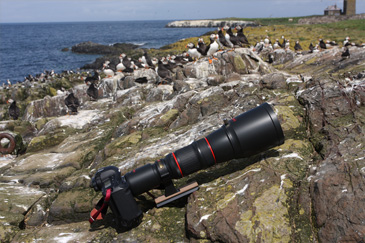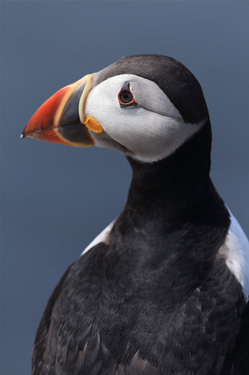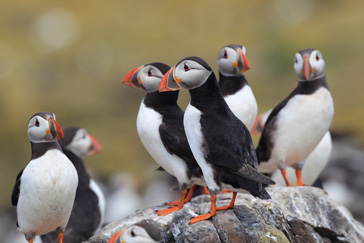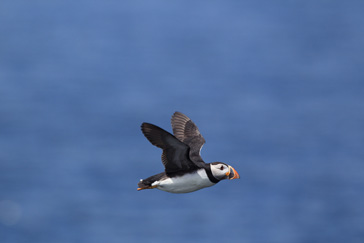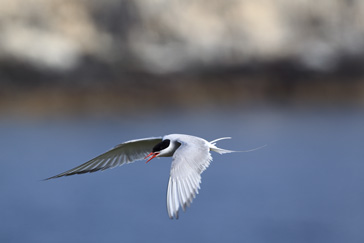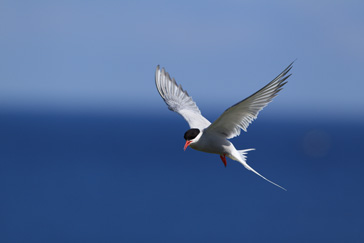Inner Farne is a grass-covered island that is used as a breeding ground by large numbers of arctic terns.
Arctic terns rear their young as far north as the Arctic Circle, yet spend their non-breeding time in the Antarctic Circle, and are known as the bird that migrates the greatest distance.
Although arctic terns can be seen in Japan on rare occasions, I couldn’t help being excited to be able to see this yearned-for bird, particularly individual birds actively flying in their attractive summer plumage.
Arctic terns nest on the ground, but when I visited in early July there were already young birds that were capable of flying.
The parent birds were catching small fish out at sea, and then feeding the fish to their young.
When the parent birds returned from the sea, they searched for their young, then flew for a short period at low speed in a hovering type of motion while they selected the timing for their landing. This hovering motion provided a chance for photographing the birds.
Since the width of the walkway close to the shooting location was narrow, and the young arctic terns were wandering around at my feet, I refrained from using the tripod and shot hand-held instead.
As to the key points of the shooting method, I basically used the preset focus method as I had done when capturing the flying puffins but while the arctic terns were hovering I could carry out fine focusing by turning the focus ring before taking the photograph.
Although this meant I was actually photographing the birds in the situation where they were flying against a sea background, the lens performance in this case allowed faithful depiction of the image.
The fact that color blur was not apparent at the edges of the birds’ white wings when using the PROMINAR 500mm is a testimony to the high resolution lens.
In addition, since reduction in the peripheral brightness was not noticeable close to the aperture, the lens can also be used with confidence for capturing monotone backgrounds such as the sea and sky.
The two hours spent surrounded by so many arctic terns also passed in a flash, and I left the island with a sense of accomplishment coupled with a feeling of fatigue.
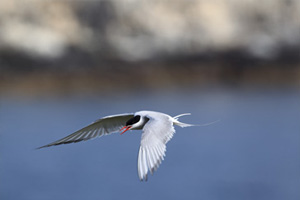
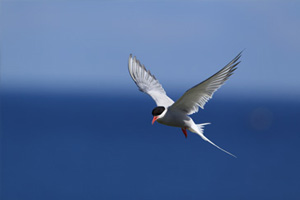
- Here I captured a hovering arctic tern. I took this photograph by applying the preset focusing method, in which the focus is set to an optional distance. Then when the arctic tern begins hovering close to the set distance, point the camera at the bird to capture the image in the finder and carry out fine adjustment by turning the focus ring. Although this technique requires a little getting used to, it would be a good idea to practice this habitually so that you instinctively remember the focus ring turning direction and the amount of change in the focus.
While my travel this time was an overseas birdwatching trip in which I visited an island of puffins, with overseas travel there is a great deal of moving around as well as restrictions on the amount of luggage that one can carry.
At this time, I wish to make my photographic equipment lighter, even if only by a small amount, without compromising on resolution.
This trip gave me a real feeling that the Kowa PROMINAR 500mm provides one answer to these requirements.

